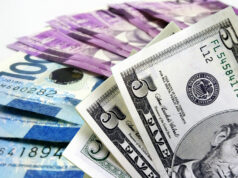Inflation seen staying above target next year
INFLATION will likely remain above target in 2019, a global bank said, which will prompt further rate hikes from the Bangko Sentral ng Pilipinas (BSP) to keep local yields competitive.
Analysts at Deutsche Bank see the need for three more rate hikes next year following a likely pause during today’s rate-setting meeting.
“We expect another two rate hikes in Indonesia and three in the Philippines will be needed in 2019, which should help to reverse the deterioration in the current account, moderate at least the depreciation of the currency and stabilize inflation,” the global bank said in a report published over the weekend.
Eleven of 12 economists tapped for a BusinessWorld poll last week expect the BSP to hold rates, clipping a streak of five consecutive tightening moves worth a total of 175 basis points (bp).
Inflation dropped to six percent last month from a nine-year peak of 6.7% in September and October, assisted by a sharp drop in world crude prices and food costs.
Bank economist Michael Spencer said the Philippine economy is “overheating,” thus needing higher interest rates to temper local prices and make growth sustainable. He added that growth has been “above potential” in recent years, but has slowed to a three-year low of 6.1% in the third quarter.
Deutsche Bank sees gross domestic product (GDP) growth settling at 6.2% this year, to be followed by a softer 5.7% climb in 2019 and 5.5% in 2020. These are below the government’s 7-8% annual growth goals.
Central bank officials have dismissed fears of overheating, saying that the economy is not running too hot despite the sustained above-six percent growth.
The German lender is projecting three rate hikes worth 25 bps each for the first three quarters of 2019, which is more hawkish than market consensus. Other analysts are even expecting the BSP to kick off a series of rate cuts in 2019 to gradually unwind the 175-bp rate increases this year.
“Even after seven rate hikes, monetary policy remains highly accommodative and the fiscal deficit is still rising,” the report read. “Both monetary and fiscal policies should be tighter, but absent such bold policies, we expect the currency to continue to depreciate and the central bank to continue raising rates at least until mid-2019.”
Meanwhile, the bank also expects inflation to remain elevated at 5.2% in 2019 versus a 5.3% print this year, before easing to 4% by 2020. This will beat government estimates of a return to the 2-4% target band.
“Ultimately, though, to get inflation stably back inside the target band, the economy needs to slow down to below potential and stay there for a few quarters. With a few more rate hikes, we think that will happen although we don’t see headline inflation below 4% until 2020,” Mr. Spencer added.
On the flipside, other market watchers expect the BSP to unwind sooner.
“Should headline inflation continue to slide in coming months, growth slow to sub-6% levels in coming quarters and the Fed adopts a more dovish stance, then the likelihood that the BSP reverses its stance to easing by 2Q19 will have increased,” said Nicholas Antonio T. Mapa, senior economist at ING Bank NV Manila branch.
Mr. Mapa previously said that cuts in bank reserves may be introduced as early as the first quarter, to be followed by a 25bp rate reduction between April-June.
Other economists are likewise betting that a 100bp reduction in the required reserves will be introduced first to infuse additional liquidity amid tighter financial conditions. — Melissa Luz T. Lopez



